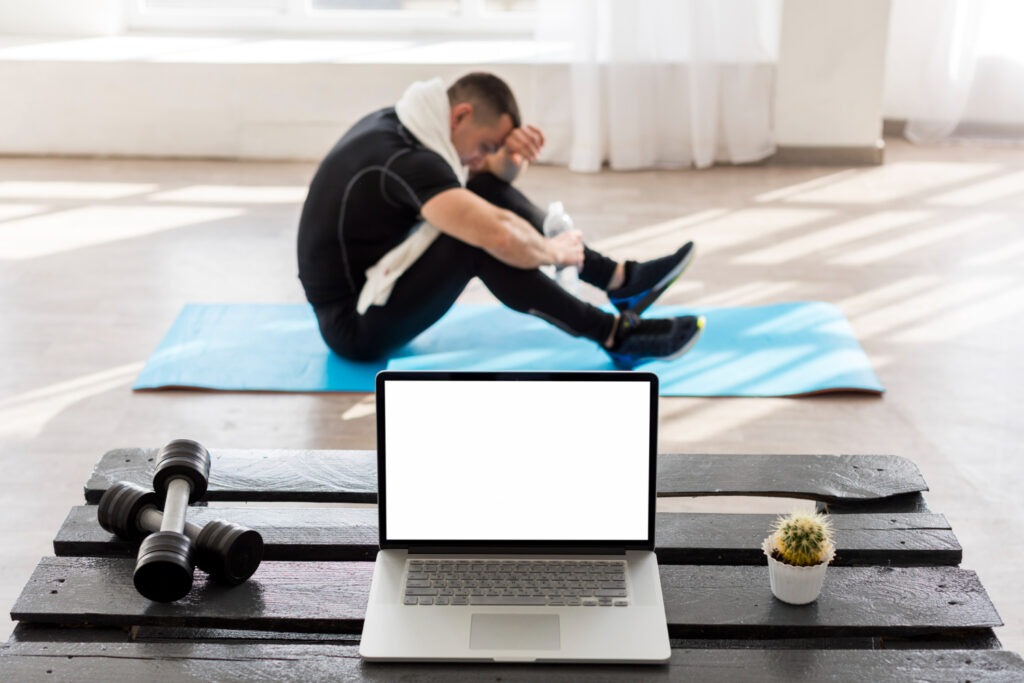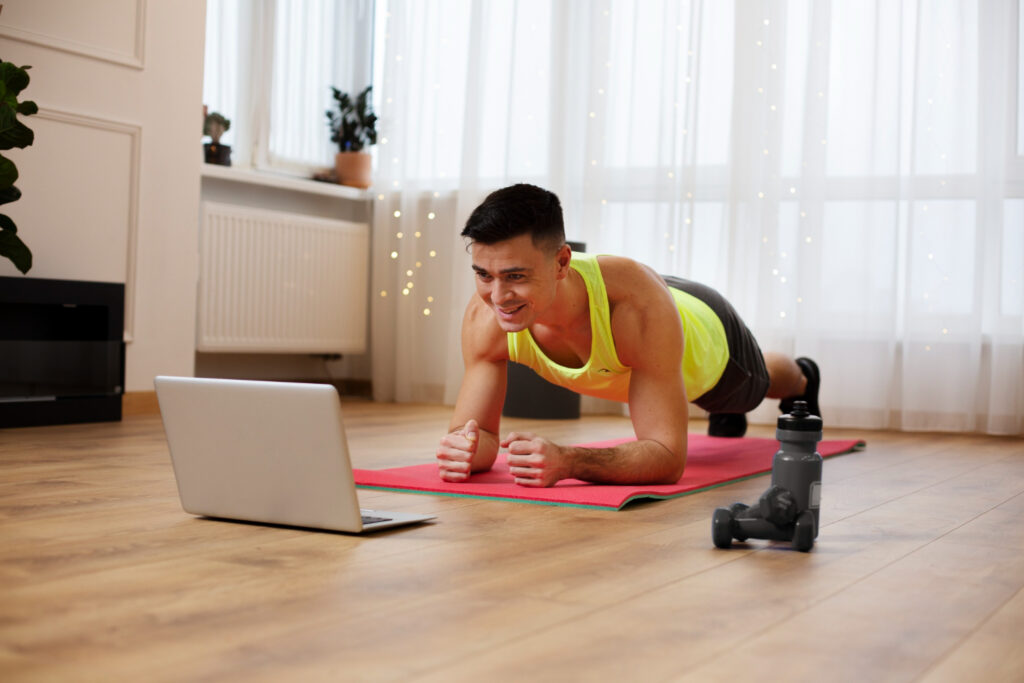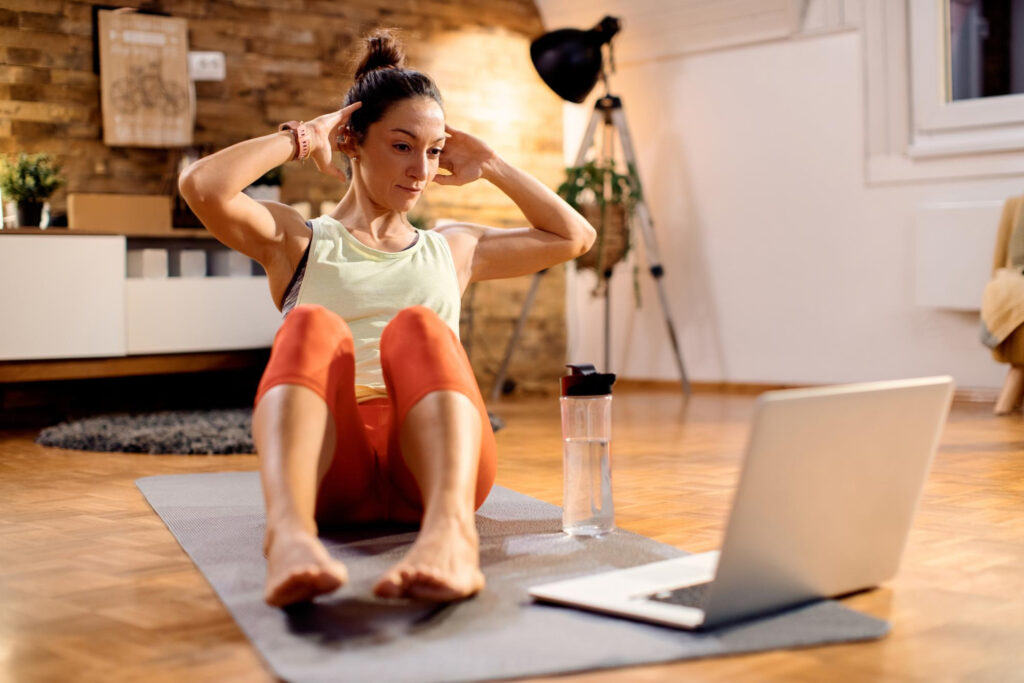Home Workouts embarking on a fitness journey from the comfort of your home is an empowering decision. Whether you are looking to improve your health, build strength, or shed excess weight, home workouts offer a convenient and effective solution.
The best part? You don’t need an elaborate setup or expensive gym memberships. With a well-structured routine and a commitment to consistency, you can achieve remarkable results right in your living room.
This guide will walk you through beginner-friendly workouts, essential tips, and effective exercises to help you get started on your fitness journey.
The Benefits of Home Workouts
Home workouts are a fantastic way to stay fit without the need for a gym membership. You can exercise anytime, anywhere, without worrying about long commutes or crowded spaces.
Whether it’s early in the morning or late at night, your workout schedule is completely in your hands.
1. Convenience and Flexibility
One of the greatest advantages of home workouts is the ability to exercise whenever it fits into your schedule. There’s no need to commute to the gym or adhere to its operating hours. You can work out early in the morning, during lunch breaks, or even before bedtime.
2. Cost-Effective Fitness Of Home Workouts
Gym memberships, personal trainers, and fancy equipment can be costly. Home workouts eliminate these expenses while still providing excellent fitness results.
A few resistance bands, a yoga mat, and bodyweight exercises are all you need to get started.

3. Customization and Comfort
You can tailor your workouts to your preferences and fitness level. No need to worry about feeling self-conscious or intimidated by advanced gym-goers. Home workouts provide a judgment-free zone where you can experiment, learn, and grow.
4. Improved Consistency
Without external barriers like travel time or waiting for gym equipment, sticking to a workout routine becomes much easier. The convenience of home workouts fosters a sense of accountability and discipline, leading to long-term fitness success.
Essential Tips for Beginners For Home Workouts
Before diving into specific exercises, it’s important to keep these foundational tips in mind:
Start Slowly: Avoid the temptation to push too hard too soon. Gradual progression is key to preventing injuries and ensuring sustainable progress.
Prioritize Proper Form: Performing exercises with correct form is more beneficial than increasing intensity too quickly. Poor form can lead to strain and setbacks.
Create a Dedicated Workout Space: Having a designated area for home workouts will help minimize distractions and improve focus.
Stay Hydrated and Fuel Your Body: Drink enough water and consume nutrient-dense foods to support your fitness journey.
Listen to Your Body: Rest when needed, and don’t ignore signs of overexertion or discomfort.
Beginner-Friendly Home Workouts Routine
The following routine is designed for beginners and requires minimal to no equipment. It targets major muscle groups while improving cardiovascular endurance and flexibility.
Warm-Up (5-10 Minutes)
A proper warm-up prepares your muscles, increases circulation, and reduces the risk of injury. Try the following dynamic movements:
Arm Circles – 30 seconds forward, 30 seconds backward
Jumping Jacks – 1 minute
High Knees – 1 minute
Leg Swings – 30 seconds per leg
Torso Twists – 30 seconds
Full-Body Home Workout (20-30 Minutes)
Perform each exercise for 30-45 seconds, followed by 15 seconds of rest. Complete 2-3 rounds for a full session.
1. Bodyweight Squats
Squats strengthen your lower body, particularly your quadriceps, hamstrings, and glutes. Keep your feet shoulder-width apart, push your hips back, and lower yourself until your thighs are parallel to the floor.
2. Push-Ups (Knee or Standard)
Push-ups build upper body strength, targeting the chest, shoulders, and triceps. If standard push-ups are challenging, modify by placing your knees on the ground.
3. Glute Bridges
Lie on your back with your knees bent and feet flat on the floor. Lift your hips towards the ceiling, squeezing your glutes at the top before lowering back down.
4. Plank Hold In Home Workouts for Beginner
Engage your core, keeping your body in a straight line from head to heels. Hold for 30 seconds or longer to build core stability.

5. Standing Calf Raises
Rise onto your toes, hold for a second, and slowly lower down. This exercise strengthens your calves and improves balance.
Cool-Down (5-10 Minutes)
Cooling down aids in muscle recovery and reduces post-workout soreness. Try the following stretches:
Seated Hamstring Stretch – 30 seconds per leg
Child’s Pose – 30 seconds
Chest Opener Stretch – 30 seconds
Neck Rolls – 15 seconds per direction
Cat-Cow Stretch – 30 seconds
Tips to Stay Motivated For Home Workouts
Sticking to home workouts can be challenging without a structured plan. Here’s how to maintain consistency:
Set Clear Goals: Whether it’s weight loss, muscle gain, or endurance improvement, having specific goals keeps you focused.
Track Progress: Use a journal or a fitness app to log workouts and track improvements.
Mix Up Your Routine: Prevent boredom by incorporating new exercises, dance workouts, or yoga sessions.
Find an Accountability Partner: A workout buddy or virtual fitness community can provide encouragement and support.
Reward Yourself: Celebrate small milestones with non-food-related rewards, such as new workout gear or a relaxing massage.

Conclusion:
Starting a fitness routine at home doesn’t have to be overwhelming. With the right approach, home workouts can be just as effective as gym-based training.
By following a structured routine, maintaining proper form, and staying motivated, you can build a strong foundation for a healthier and fitter lifestyle.
Commit to consistency, listen to your body, and enjoy the journey toward better health. Remember, progress takes time, so be patient and keep pushing forward!


